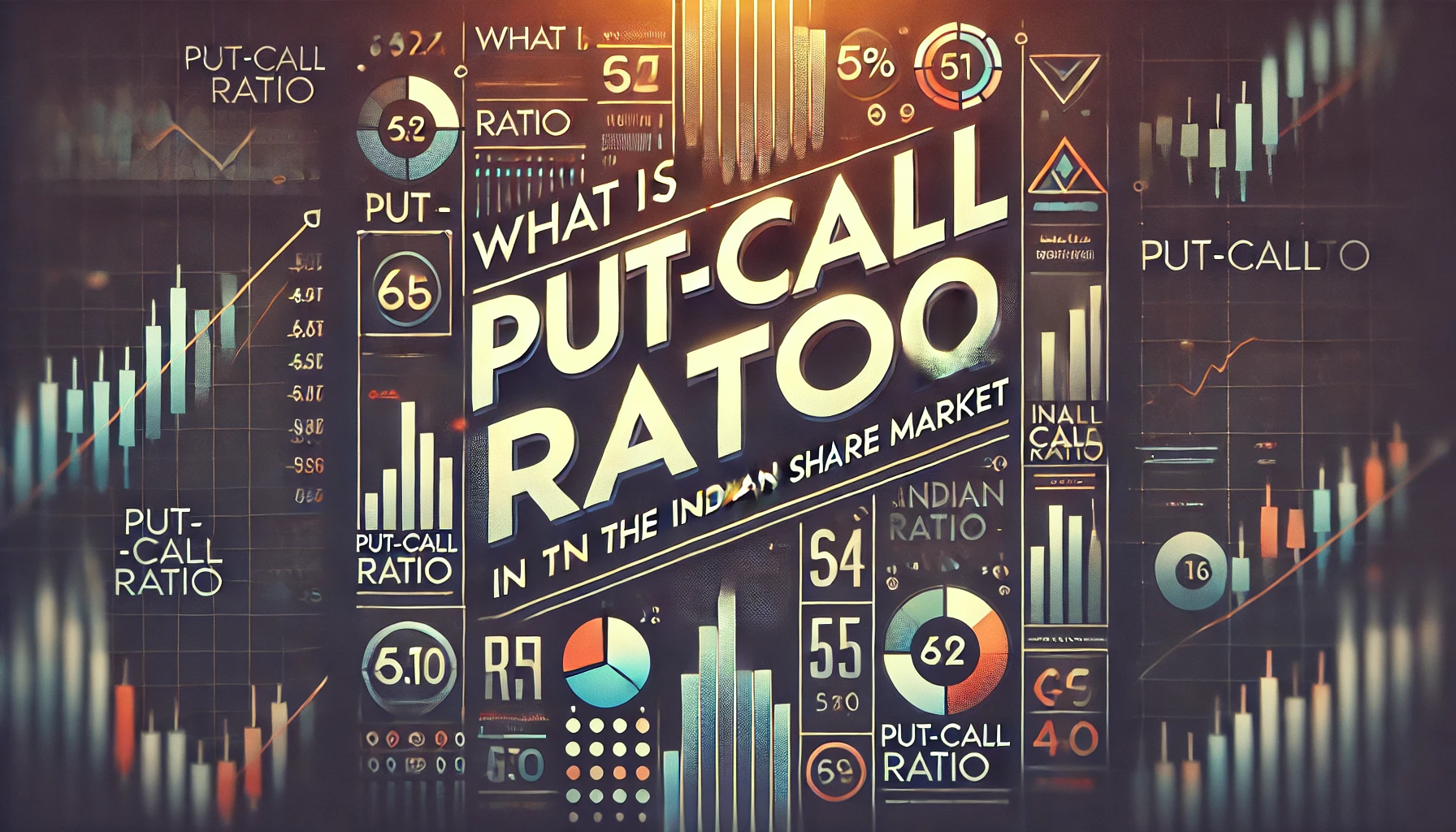In the ever-evolving world of derivatives trading, options have become a powerful tool for investors looking to benefit from various market conditions. For traders with a positive outlook on the market, bullish option strategies offer a way to maximize returns while managing risk. These strategies can be customized based on individual risk tolerance and market expectations, making them essential for any trader looking to capitalize on upward market trends.
In this blog, we will explore the basics of bullish option strategies, their application in the Indian share market, and review historical data to provide practical insights.
What Are Bullish Option Strategies?
Bullish option strategies are methods used by traders to profit from rising stock prices. These strategies are typically employed when a trader expects the price of an underlying asset to increase. The most common bullish strategies involve using call options, although some strategies also incorporate put options to manage risk.
Key Terminology:
| Term | Definition |
|---|---|
| Call Option | A contract that gives the buyer the right, but not the obligation, to buy the underlying asset at a predetermined price. |
| Put Option | A contract that gives the buyer the right to sell the underlying asset at a predetermined price. |
| Strike Price | The price at which the option buyer can purchase (call) or sell (put) the underlying asset. |
| Premium | The price paid by the option buyer to acquire the option. |
| Expiration Date | The last date on which the option can be exercised. |
1. Long Call Strategy
The long call is the simplest and most straightforward bullish option strategy. This involves buying a call option on a stock or index that you expect will rise in price.
Example of Long Call Strategy:
Suppose Stock A is currently trading at ₹800, and you believe it will rise to ₹900 in the next month. You decide to buy a call option with a strike price of ₹850 and an expiration date of one month. The premium for this option is ₹20 per share.
- Scenario 1: Stock Rises
If the stock price rises to ₹900, the option is in-the-money. Your profit per share would be ₹50 (₹900 – ₹850), minus the premium of ₹20, resulting in a net gain of ₹30 per share. - Scenario 2: Stock Falls
If the stock price falls below ₹850, the option expires worthless, and you lose only the premium of ₹20 per share.
Historical Data:
Here’s a table illustrating the historical performance of a long call strategy for Nifty 50 Index options over the past year:
| Month | Nifty 50 Index Price (₹) | Call Option Strike Price (₹) | Option Premium (₹) | Profit/Loss (₹) |
|---|---|---|---|---|
| January | 17,000 | 17,500 | 100 | -100 |
| April | 17,500 | 18,000 | 120 | +380 |
| July | 18,500 | 19,000 | 150 | +350 |
| October | 19,000 | 19,500 | 130 | -130 |
2. Bull Call Spread
A bull call spread is a more advanced strategy that involves buying a call option and simultaneously selling another call option at a higher strike price. This reduces the cost of the trade by collecting a premium from the sold option, but it also limits the potential profit.
Example of Bull Call Spread:
Let’s assume Stock B is currently priced at ₹1,000, and you expect it to rise to ₹1,100 in the next two months. You buy a call option with a strike price of ₹1,050, paying a premium of ₹30, and sell a call option with a strike price of ₹1,100, collecting a premium of ₹15.
- Scenario 1: Stock Rises to ₹1,100
Your profit is capped at ₹50 (₹1,100 – ₹1,050), minus the net premium of ₹15, resulting in a gain of ₹35 per share. - Scenario 2: Stock Falls Below ₹1,050
Both options expire worthless, and your loss is limited to the net premium of ₹15 per share.
Benefits of Bull Call Spread:
- Lower Premium Cost: The premium paid is lower than that of a simple long call.
- Defined Risk: Both potential profits and losses are capped, making it a safer strategy.
Table: Bull Call Spread Performance
| Date | Stock B Price (₹) | Call Option 1 Strike Price (₹) | Call Option 2 Strike Price (₹) | Net Premium (₹) | Profit/Loss (₹) |
|---|---|---|---|---|---|
| March 2023 | 1,050 | 1,050 | 1,100 | 15 | 35 |
| June 2023 | 1,100 | 1,050 | 1,100 | 15 | 35 |
| September 2023 | 1,000 | 1,050 | 1,100 | 15 | -15 |
3. Bull Put Spread
The bull put spread involves selling a put option at a higher strike price and buying a put option at a lower strike price. This strategy generates income from the sold put option, but limits the risk by purchasing the lower strike put.
Example of Bull Put Spread:
Consider Stock C, currently trading at ₹900. You sell a put option with a strike price of ₹850, collecting a premium of ₹40, and buy a put option with a strike price of ₹800, paying a premium of ₹20.
- Scenario 1: Stock Rises Above ₹850
Both options expire worthless, and you keep the net premium of ₹20 per share as profit. - Scenario 2: Stock Falls Below ₹850
The sold put option is exercised, and your maximum loss is capped at ₹50 (₹850 – ₹800), minus the net premium of ₹20, resulting in a loss of ₹30 per share.
Table: Bull Put Spread Performance
| Date | Stock C Price (₹) | Put Option 1 Strike Price (₹) | Put Option 2 Strike Price (₹) | Net Premium (₹) | Profit/Loss (₹) |
|---|---|---|---|---|---|
| February | 900 | 850 | 800 | 20 | 20 |
| May | 850 | 850 | 800 | 20 | -30 |
4. Short Put Strategy
A short put strategy involves selling a put option, expecting that the stock price will rise or stay above the strike price. This strategy allows traders to generate income from the premium received.
Example of Short Put Strategy:
Suppose Stock D is trading at ₹700, and you sell a put option with a strike price of ₹650, collecting a premium of ₹25 per share.
- Scenario 1: Stock Remains Above ₹650
The option expires worthless, and you keep the entire premium of ₹25 as profit. - Scenario 2: Stock Falls Below ₹650
You are obligated to buy the stock at ₹650, even if the market price is lower, resulting in a loss equal to the difference between the strike price and the stock’s actual price, minus the premium.
Historical Performance of Bullish Option Strategies
The following table shows the average monthly returns for bullish option strategies on select Indian stocks over the past year:
| Month | Reliance Industries (₹) | TCS (₹) | Infosys (₹) | Nifty 50 Index (₹) |
|---|---|---|---|---|
| January | +5.4% | +4.8% | +6.2% | +5.1% |
| April | +3.2% | +2.9% | +3.7% | +2.8% |
| July | +6.8% | +5.9% | +6.4% | +6.0% |
| October | +4.5% | +3.7% | +4.9% | +4.2% |
Conclusion
Bullish option strategies are a vital tool for traders looking to profit from rising stock prices in the Indian share market. Each strategy offers its own risk and reward profile, allowing traders to select the approach that best suits their market outlook and risk tolerance. Whether it’s the simplicity of a long call or the more conservative bull put spread, these strategies offer flexibility and profit potential in a bullish market.
By understanding and applying these strategies, investors can make informed decisions and capitalize on opportunities in the Indian derivatives market.

What Is Implied Volatility?
In the realm of Indian share market derivatives, implied volatility (IV) plays a crucial role …

What is Margin Funding?
Margin funding is a powerful tool in the Indian share market that allows traders to …

Forward vs Future contract
In the Indian share market, derivatives such as forward and future contracts play a pivotal …

What is Margin Money?
Margin money is a crucial aspect of trading in the Indian share market, especially in …

What is Put-Call Ratio?
The Put-Call Ratio (PCR) is one of the most widely used indicators in options trading …

What is Derivatives?
Derivatives are financial instruments whose value is derived from an underlying asset or benchmark. In …

What is Cost of Carry?
The cost of carry is an essential concept in futures trading that reflects the cost …

What is futures
Futures are a fundamental part of derivatives trading in the Indian stock market. They allow …

Bullish Option Strategies
In the ever-evolving world of derivatives trading, options have become a powerful tool for investors …

Understanding Physical Settlement in Futures & Options Contracts: A Comprehensive Guide
In the world of derivatives trading, the concept of physical settlement has gained prominence, particularly …

what are call options
The Indian share market has expanded significantly over the years, attracting a growing number of …

What Is Credit Spread Strategy
In the world of options trading, the credit spread strategy is one of the most …

What Is a Forward Contract
A forward contract is a customized financial agreement between two parties to buy or sell …

Types of Derivatives in India
The Indian derivatives market has grown exponentially, becoming a vital tool for investors and traders …

What is Swaps Derivatives
In the world of derivatives, swaps are a special class of contracts that allow two …

Intrinsic Value and Time Value of Options
Options trading is one of the most widely used financial instruments in the Indian share …

What is Open Interest?
In the world of derivatives, the concept of “Open Interest” plays a crucial role in …

Types of underlying assets in derivatives
The Indian derivatives market has grown exponentially over the last few decades, thanks to its …

derivatives on Option Volatility & Pricing Strategies
The Indian share market derivatives segment is a dynamic environment where advanced traders rely heavily …

What is Futures Contract
The Indian share market offers various financial instruments that provide opportunities for investors and traders. …

What is implied volatility in options?
In the world of options trading, one of the most crucial elements to understand is …

Futures Pricing Formula
The Indian share market is known for its dynamic nature and offers various opportunities for …

What is an ITM Call Option?
The world of options trading is filled with technical terms that are crucial for investors …

What is Max Pain Theory?
The Indian share market is full of strategies and theories that traders use to predict …

What is OTM Call Options
In options trading, terms like “in the money” (ITM), “at the money” (ATM), and “out …

What Is Rollover
Rollover is a common term in the world of futures and derivatives trading, especially in …

Futures Prices Converge Upon Spot Prices
In the world of financial markets, futures contracts play a significant role. One of the …

Call Ratio Back Spread
In the Indian share market, advanced trading strategies such as the Call Ratio Back Spread …

Margin Call Meaning
A margin call is one of the most critical warnings in trading, often marking a …

What is Bermuda Option?
The financial markets are full of complex instruments, and one such tool is the Bermuda …


















